Cart 0 Product Products Amount:
(empty)
(empty)
Your cart
Your cart
Together:
No products
To be determined Shipping:
0,00 zł Total:
Product successfully added to your shopping cart (There are 0 items in your cart.) (There is 1 item in your cart.)
Product:
Quantity:
Total:
Total products
Total shipping To be determined
Total

Blog categories
Do you want to start brewing beer at home but don't know anything about it? Check out our blog. We share our knowledge with those who take their first brewing steps, as well as with those who already brew. Home brewing is not difficult!
Top sellers
-

-

-

-

Muslin hop boiling bag 1 piece
Reusable muslin mesh. Perfect for cooking hops and other spices, cold...
4,50 zł -

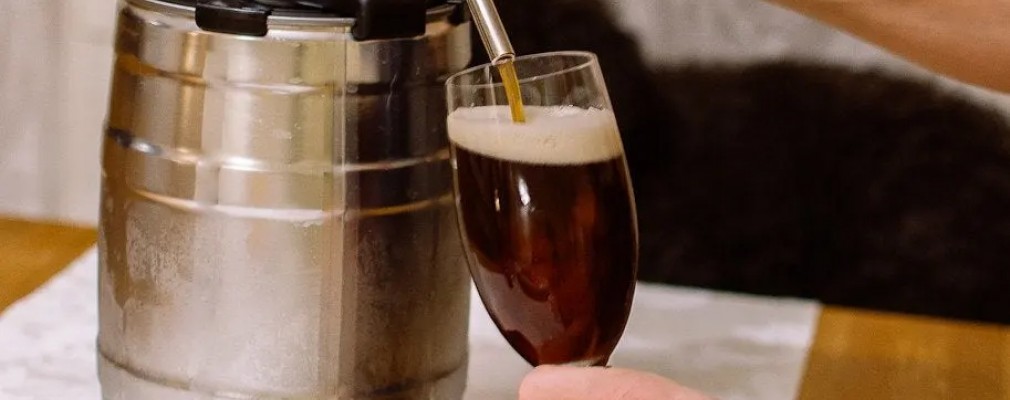
4
6865
Data publikacji:
02
FEB
2023
How to keg homemade beer?
We close the beer kegs with rubber gaskets that protect the beer against loss of C02. Insert the tap into the keg by pushing the plastic pin in the seal inside the keg.
Udostępnij:
COPYRIGHT 2020 Twój Browar ALL RIGHTS RESERVED Design and implementation dih.pl
















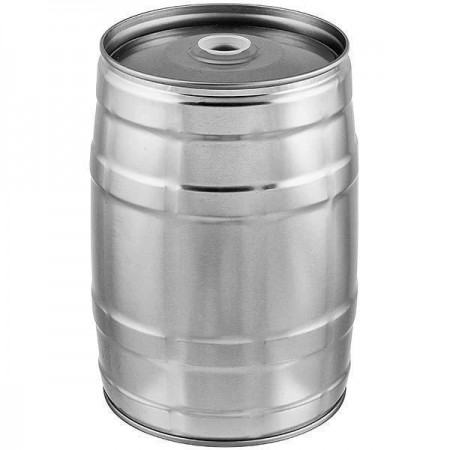 There is no problem when the bottles are clean and all you need to do is disinfect them. However, the brewing drudgery is not known to those who have not cleaned the dried dirt from the bottom of the collected bottles. That is why, among other things, we often start to think about an alternative to bottling. A natural solution in this situation is the so-called "kegging" beer, i.e. bottling into steel or plastic barrels. We have several types of kegs, their capacity, and ways of liquor to choose from. In this text, we will present the most popular variant among home brewers, bottling into five-liter steel barrels, similar to those we can find on store shelves with beer.
There is no problem when the bottles are clean and all you need to do is disinfect them. However, the brewing drudgery is not known to those who have not cleaned the dried dirt from the bottom of the collected bottles. That is why, among other things, we often start to think about an alternative to bottling. A natural solution in this situation is the so-called "kegging" beer, i.e. bottling into steel or plastic barrels. We have several types of kegs, their capacity, and ways of liquor to choose from. In this text, we will present the most popular variant among home brewers, bottling into five-liter steel barrels, similar to those we can find on store shelves with beer. For starters, we need to stock up on 5l stainless steel kegs. You can choose from cans with a built-in plastic tap at the bottom, such as those used in commercial breweries, or identical kegs, but without a tap. For the bottling and dispensing of home beer, we recommend cans without a built-in tap. At first glance, the built-in tap seems to be a convenient solution. However, while this type of cans works well in commercial beers, not necessarily in home brewing.
For starters, we need to stock up on 5l stainless steel kegs. You can choose from cans with a built-in plastic tap at the bottom, such as those used in commercial breweries, or identical kegs, but without a tap. For the bottling and dispensing of home beer, we recommend cans without a built-in tap. At first glance, the built-in tap seems to be a convenient solution. However, while this type of cans works well in commercial beers, not necessarily in home brewing.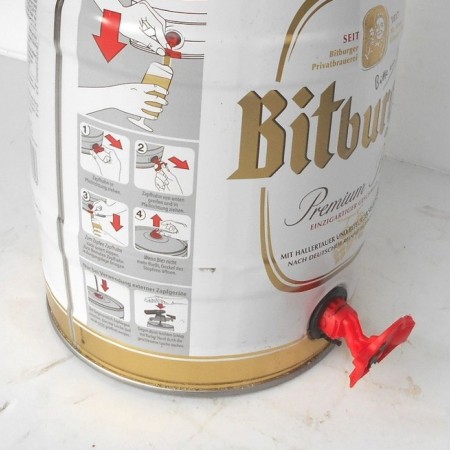 Why? First issue - yeast sediment. At the bottom of bottles or cans of home-refermented beers, we always have a layer of yeast, when pouring beer with the tap located at the bottom, we usually remove the beer together with this sediment. Thorough washing and disinfection of such kegs, if we want to use them again, will be more troublesome. The second thing, the loss of C02 saturation in the case of storing opened beer. If we do not empty the keg in one sitting, we can store the beer in it until the next time in the fridge, even for many days. However, the free space in the keg will cause the beer to lose saturation.
Why? First issue - yeast sediment. At the bottom of bottles or cans of home-refermented beers, we always have a layer of yeast, when pouring beer with the tap located at the bottom, we usually remove the beer together with this sediment. Thorough washing and disinfection of such kegs, if we want to use them again, will be more troublesome. The second thing, the loss of C02 saturation in the case of storing opened beer. If we do not empty the keg in one sitting, we can store the beer in it until the next time in the fridge, even for many days. However, the free space in the keg will cause the beer to lose saturation. Using a tap with a C02 cartridge, we can prevent this by filling the empty space with carbon dioxide, which will maintain the level of beer saturation. It is even possible to saturate beer with CO2 in this way, which is completely degassed, for example fresh from the fermenter. For this purpose, pour the beer into the keg, leaving a small free space of about 1-2 cm in height, attach a tap with a CO2 cartridge, let gas in and leave it under pressure for about 24-48 hours. The lower the ambient temperature, the faster we saturate the beer with carbon dioxide. This is a nice way to quickly taste young beers. It works great with beers such as witbier, hefeweizen or light APA, whose aromas are the better the fresher they are. The third advantage of kegs without a tap is the ease of cleaning and reusable kegs. After emptying, it is enough to rinse it thoroughly with clean water, dry it and store it in a dry place until the next refill.
Using a tap with a C02 cartridge, we can prevent this by filling the empty space with carbon dioxide, which will maintain the level of beer saturation. It is even possible to saturate beer with CO2 in this way, which is completely degassed, for example fresh from the fermenter. For this purpose, pour the beer into the keg, leaving a small free space of about 1-2 cm in height, attach a tap with a CO2 cartridge, let gas in and leave it under pressure for about 24-48 hours. The lower the ambient temperature, the faster we saturate the beer with carbon dioxide. This is a nice way to quickly taste young beers. It works great with beers such as witbier, hefeweizen or light APA, whose aromas are the better the fresher they are. The third advantage of kegs without a tap is the ease of cleaning and reusable kegs. After emptying, it is enough to rinse it thoroughly with clean water, dry it and store it in a dry place until the next refill.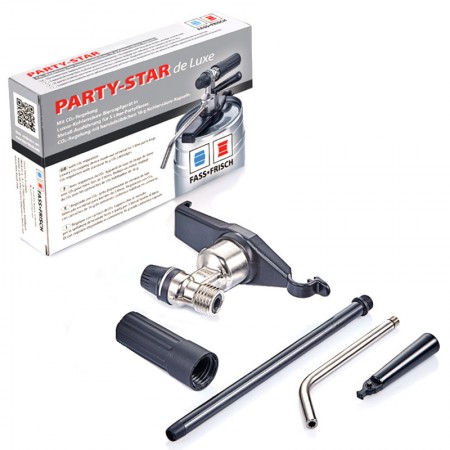 The next element of the set is a tap for bottling beer. We have a choice of a tap for the popular "C02 cartridges" with the option of pressing beer with carbon dioxide or a tap with a hand pump, where the beer is pumped with atmospheric air pumped into the keg. The advantages of the "cartridge" tap have been described above, i.e. the possibility of saturation of non-carbonated beer, protection against loss of saturation during longer storage of opened beer, additionally, the presence of CO2 in the keg protects the beer against the development of microorganisms that could contribute to its spoilage. Thanks to this, beer that we did not drink right away can be stored more safely by maintaining a constant CO2 pressure in the keg. A tap with a hand pump is certainly an economical solution, it does not require the purchase of additional C02 cartridges. However, we will not take advantage of the possibility of beer saturation, and its storage after opening will be less safe and we will not prevent the loss of carbonation.
The next element of the set is a tap for bottling beer. We have a choice of a tap for the popular "C02 cartridges" with the option of pressing beer with carbon dioxide or a tap with a hand pump, where the beer is pumped with atmospheric air pumped into the keg. The advantages of the "cartridge" tap have been described above, i.e. the possibility of saturation of non-carbonated beer, protection against loss of saturation during longer storage of opened beer, additionally, the presence of CO2 in the keg protects the beer against the development of microorganisms that could contribute to its spoilage. Thanks to this, beer that we did not drink right away can be stored more safely by maintaining a constant CO2 pressure in the keg. A tap with a hand pump is certainly an economical solution, it does not require the purchase of additional C02 cartridges. However, we will not take advantage of the possibility of beer saturation, and its storage after opening will be less safe and we will not prevent the loss of carbonation.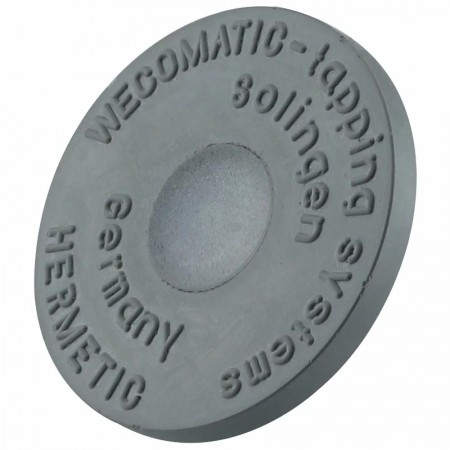
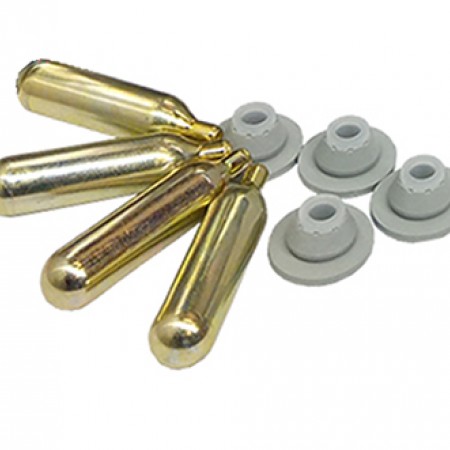 As we wrote earlier, using a CO2 tap, we can not use fermentation and saturate the beer by letting gas from the cartridge into the keg and maintaining pressure in it for about 48 hours. It is worth keeping the temperature of the beer as low as possible during saturation, we will saturate the beer more efficiently and quickly by cooling it to a few degrees Celsius. If we saturate the beer in this way, we will need an additional CO2 cartridge to press the beer. We should also remember that beer without refermentation in the keg will be much less durable, so we do not recommend storing it in this way for a long time. Refermented beer in a keg can be stored for many weeks, just like beer in a bottle. It is only recommended to store it at the lowest possible temperature, which slows down the beer aging process.
As we wrote earlier, using a CO2 tap, we can not use fermentation and saturate the beer by letting gas from the cartridge into the keg and maintaining pressure in it for about 48 hours. It is worth keeping the temperature of the beer as low as possible during saturation, we will saturate the beer more efficiently and quickly by cooling it to a few degrees Celsius. If we saturate the beer in this way, we will need an additional CO2 cartridge to press the beer. We should also remember that beer without refermentation in the keg will be much less durable, so we do not recommend storing it in this way for a long time. Refermented beer in a keg can be stored for many weeks, just like beer in a bottle. It is only recommended to store it at the lowest possible temperature, which slows down the beer aging process.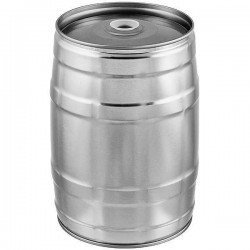
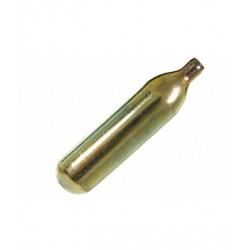
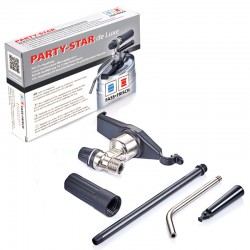
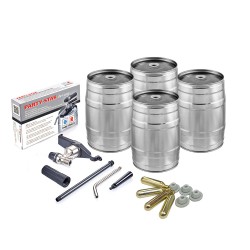
Dodaj komentarz
4 komentarze